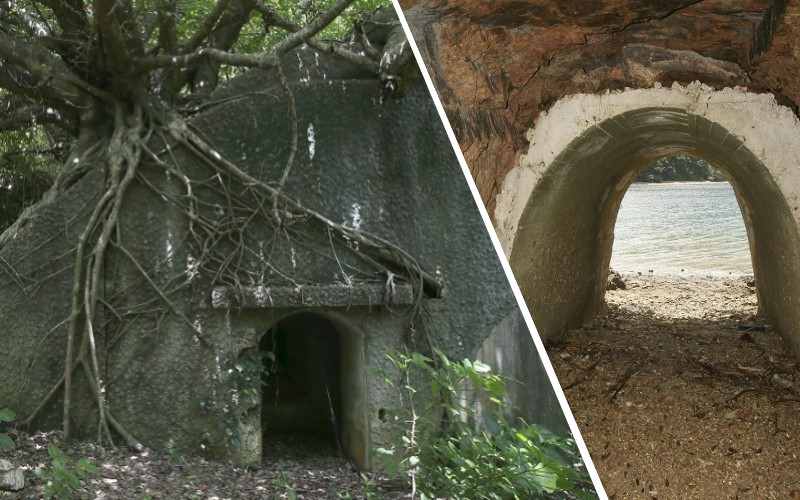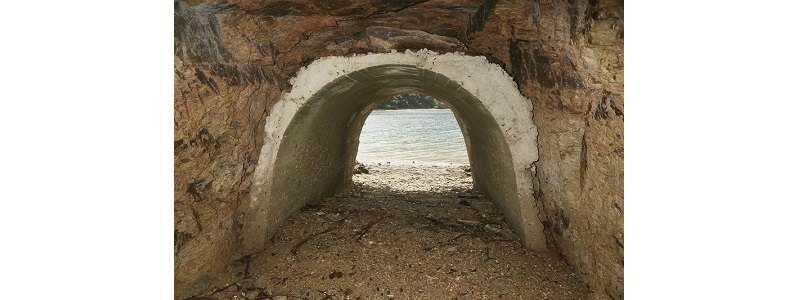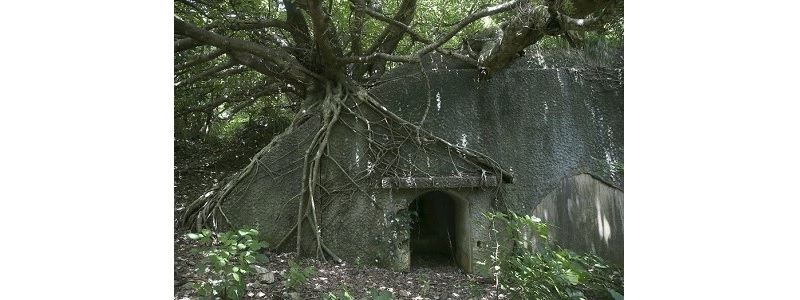Untouched military remains found on southern Japan island

The military remains
1:00 JST, August 8, 2022
A local board of education in Kagoshima Prefecture has found untouched remains of Imperial Japanese military facilities on Kakeroma Island, part of the Amami Islands in the prefecture.
The municipality of Setouchi aims to obtain national historic site status for six spots, including a gun battery and a base that launched suicide motorboat attacks. If successful, it will be the first time for military facilities built during the Taisho and Showa eras (1912-1926 and 1926-1989, respectively) to receive the designation.
Due to its location between the Kyushu region and Okinawa Prefecture, Amami-Oshima island, the main island of the Amami Islands chain, was regarded as a strategic location for national defense. In 1891, the former Japanese Imperial Navy established supply facilities on the island, while the former Japanese Imperial Army established a fortress command post there in the late Taisho era. During the Pacific War, the navy deployed the Oshima Defense Unit and a Shinyo suicide boat base to Kakeroma Island, which sits opposite Amami-Oshima island. Toshio Shimao (1917-1986), who became a well-known novelist after the war, headed the 18th Shinyo unit.

A compartment for a Shinyo suicide boat dug into a mountain near an inlet is seen in Setouchi, Kagoshima Prefecture.
Following the war, the Setouchi municipality maintained some installations, but a probe into facilities in mountains and coves far removed from settlements found several untouched remains. The town’s board of education surveyed and excavated the six sites from fiscal 2017-2021, including the Nishikomi battery, the Ankyaba battery and the 18th Shinyo suicide boat attack base.
As a result, the remains of more than 80 military facilities were found, including gun emplacements, ammunition depots, observation posts, barracks and piers. At the Nishikomi battery in the western part of Amami-Oshima, four concrete gun emplacements and two ammunition storage buildings were discovered in a subtropical forest.

The remains of a Nishikomi battery ammunition storage facility in Setouchi, Kagoshima Prefecture.
The remains of the Tokyo Bay fortress in Yokosuka, Kanagawa Prefecture, built during the Meiji era (1868-1912), has been designated a national historic site. Five of the six military remains in Setouchi were built later.
The Setouchi board of education believes the remains to be valuable as they give clues about the operation and transition of military facilities toward the end of World War II. The board intends to apply to the Cultural Affairs Agency for a national historic site designation by the end of this fiscal year.
“Unlike facilities on Okinawa Island and the Japanese archipelago, these remains are notable in that they weren’t destroyed in battle or by development projects,” said Yoshihiko Akashi, director of the Onojo Cocoro-no-furusato-kan City Museum and chairman of the town’s modern remains investigation committee. “It’s also important in that the remains show the full extent of the base, which served as the front line for mainline defense during the final stages of World War II.”




